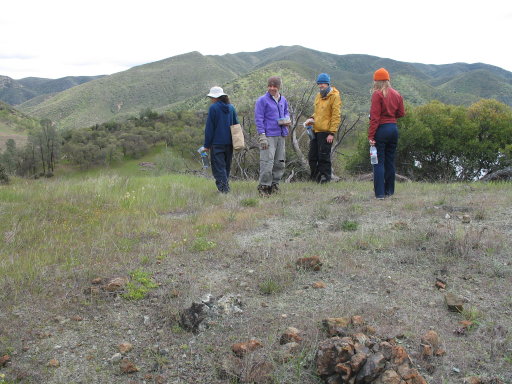
I went up to McLaughlin Reserve, one of the UC Natural Reserves operated by UC Davis, to help my labmates Adam and Danielle with their field work. McLaughlin is a gorgeous site in the middle of nowhere in the Coastal Range, next to former gold and mercury mines. It's about a three-hour drive north of Berkeley, past Napa and Calistoga, sort of near Lake Berryessa but not really.
One of McLaughlin's remarkable characteristics is its patches of serpentine soil, soil derived from the toxic and nutrient-poor rock serpentine. It is a harsh environment for plants, and few can survive. The Harte Lab has a project to census all the plants growing on a small patch of serpentine soil, for the purposes of learning more about rules governing the spatial distribution of species (such as the species-area relationship). It takes a long time to count every plant on a patch of soil! Hence, volunteers were called for, including me. What better way to spend a Friday than surrounded by awesome people, awesome scenery, and intrepid plants?
Disclaimer: I usually take approximately forever to get around to putting photos on the web, but this time, I thought I would do it right away. And I do mean right away - I just got back from this trip and haven't unpacked, eaten or showered yet. So apologies for the fact that this photo album is more cursory than usual!
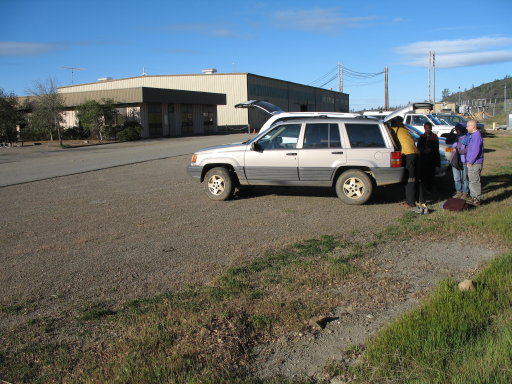
The night before, we stayed at the field station, which is a very comfortable establishment with running water, heat, electricity, and (sometimes) Internet. Not to mention jigsaw puzzles.
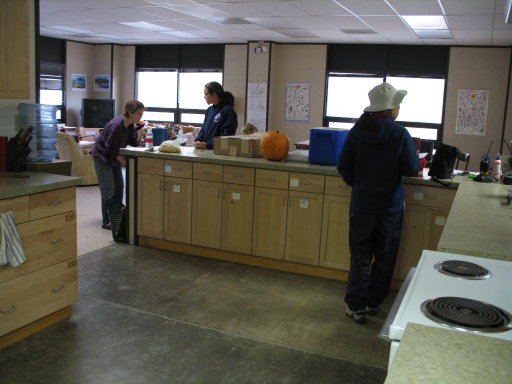
Here's the kitchen in the field station. Adam cooked us an awesome breakfast: pancakes with fruit and syrup to go on top!
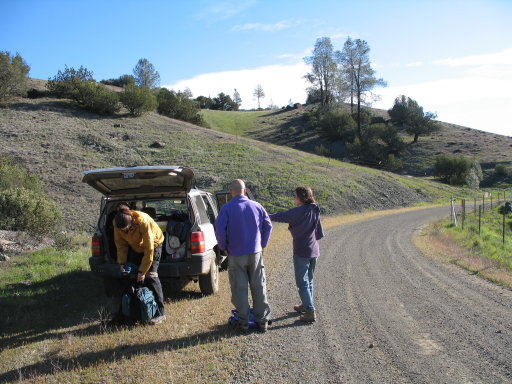
It's a forty-minute drive from the field station to our field site, over very rutted dirt roads. We've just arrived (our site is near the top of this hill), having enjoyed seeing much flowering ceanothus and redbud on the way.
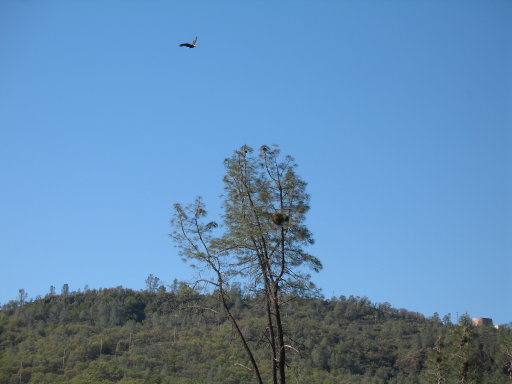
We also saw a bald eagle! Here it is flying over its nest in a digger pine tree. Sadly, the mercury mine has leached mercury into the lake, and since the eagles eat mercury-laden fish, they are no longer able to successfully reproduce.
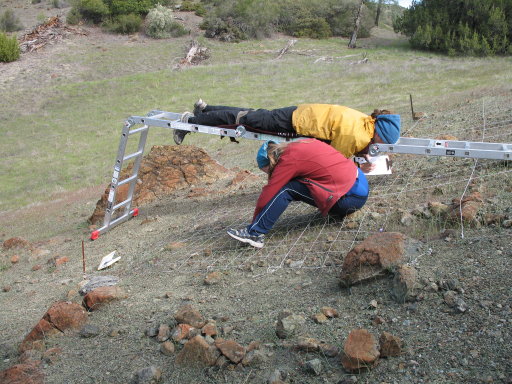
The day's work has begun. Here we are counting thousands of tiny plants. Danielle is lying on the ladder to avoid squashing them.
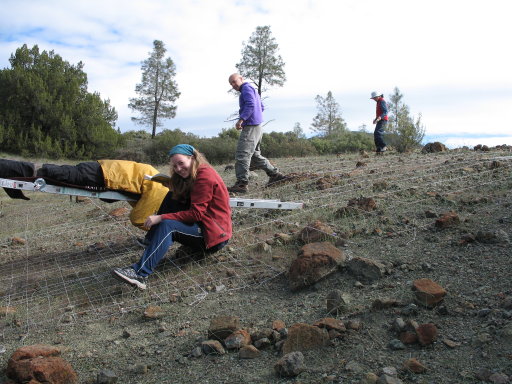
Still counting...

We decide to go have lunch on the other side of the hill where it is less windy. This picture illustrates the difference between serpentine and non-serpentine soil: on the left is normal soil, and on the right is a nearly bare patch caused by serpentine soil. Unfortunately, "nearly bare" still means "thousands of plants per square meter," so we have a lot of work to do!
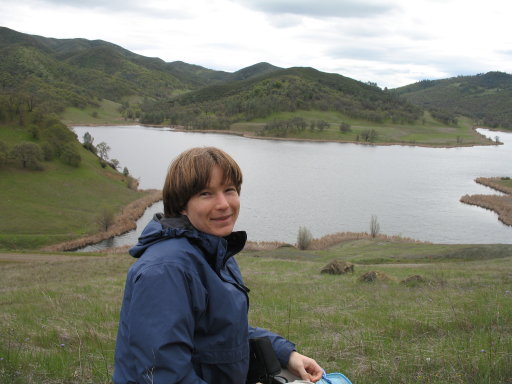
Me at lunch, overlooking the lake.
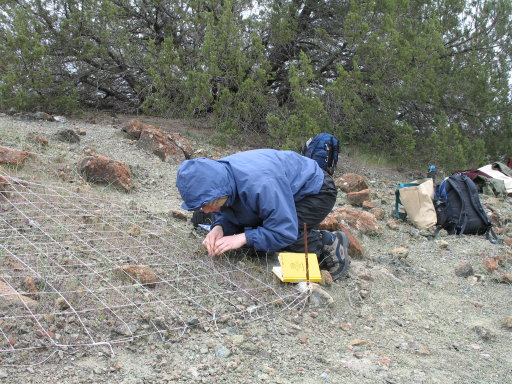
Back to work!
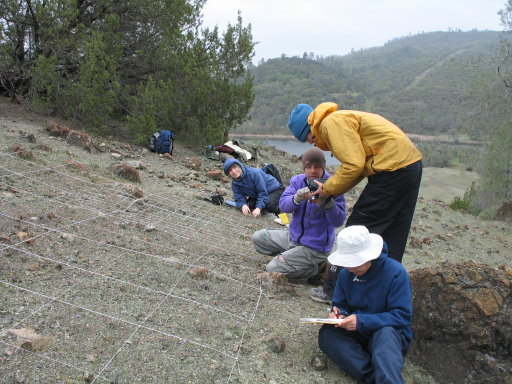
We're almost done... good thing too, since it is starting to rain...
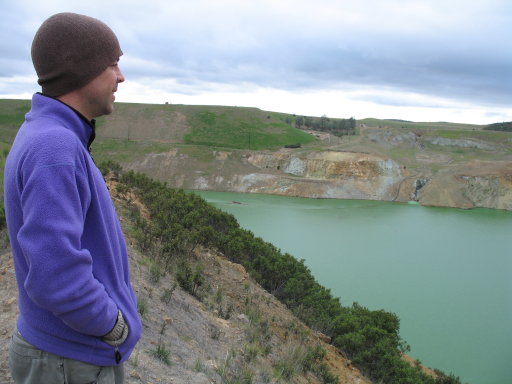
On our way back to the field station, Adam stops to look out over the old gold mine. It is now a huge pit filled with water. Apparently, the entire amount of gold removed from this mine would have made a lump about the size of a refrigerator. It's hard to believe that the operation was profitable, but it was! (Why do humans like gold so much?)
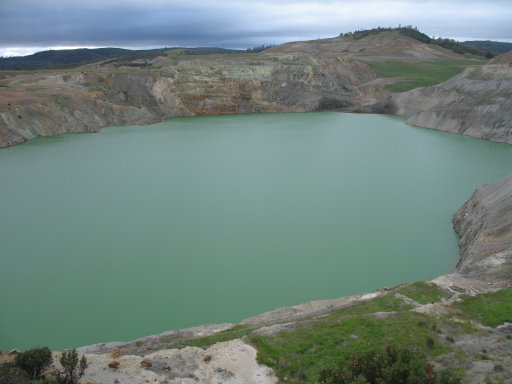
The water is very acidic, but we don't know why it is this strange color.
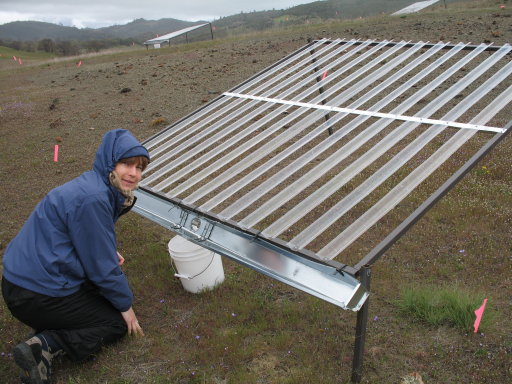
Our final stop on the way back is to look at some rainout shelters built by another researcher. They are like the ones I will be using in Malawi later this year, except that these ones only need to cover plants that are a few centimeters tall, instead of a few meters tall!
| |
|
Last updated March 29, 2008.